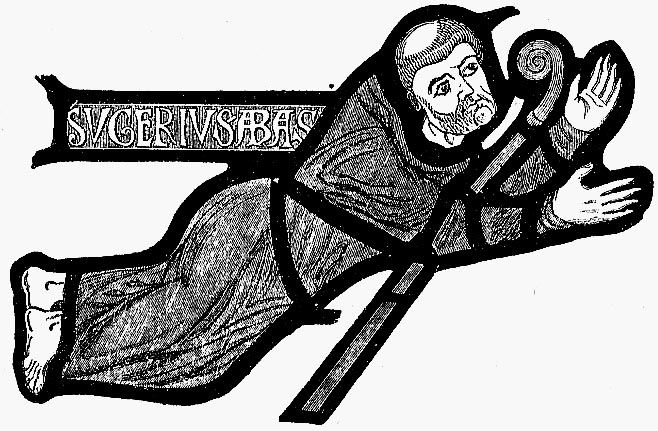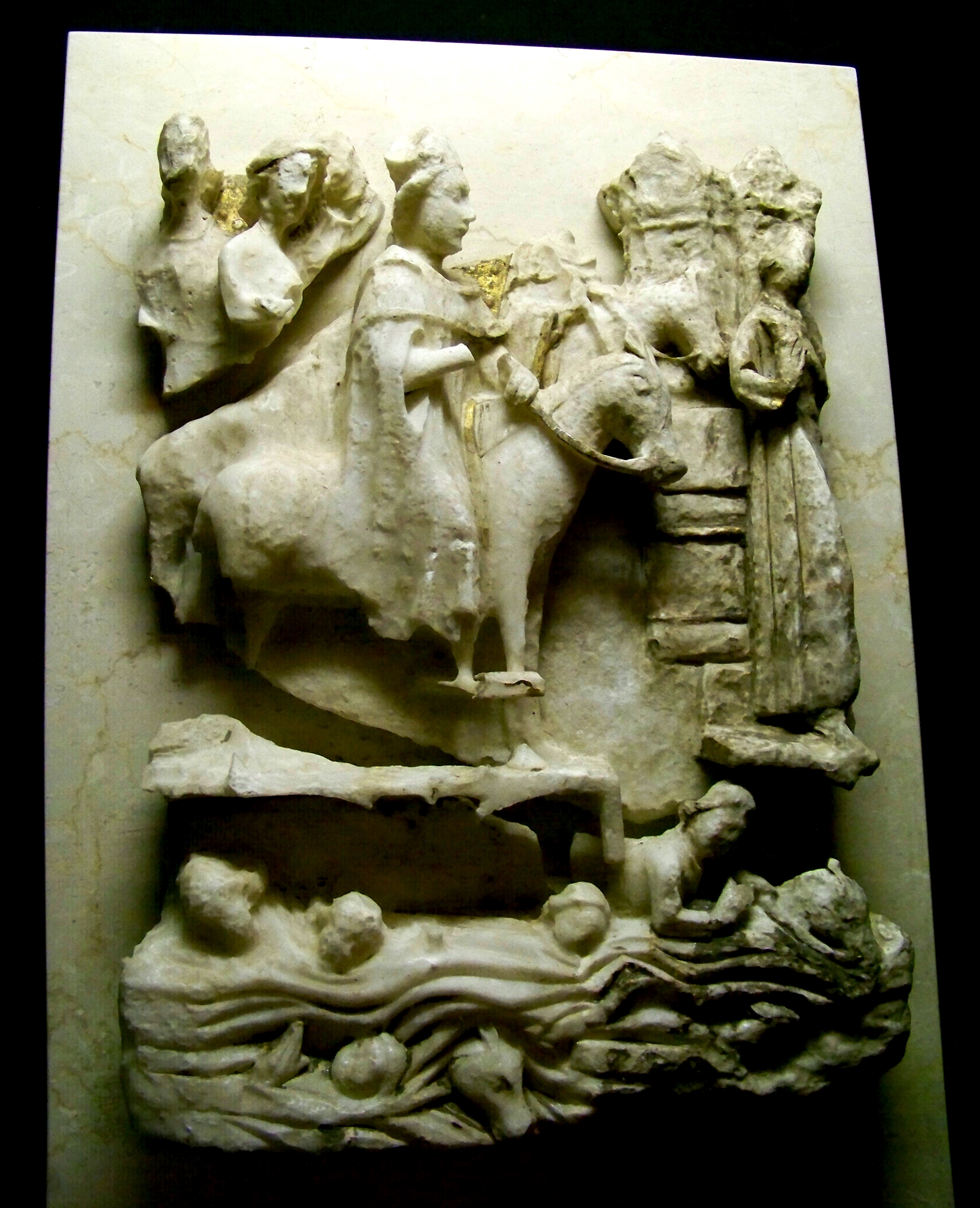|
Herbert Of Winchester
Herbert of Winchester (sometimes Herbert fitzAlberic) was an Anglo-Norman nobleman during the period following the Norman conquest of England. Career Herbert held land as an under-tenant of the Archbishop of York in the Domesday Survey of 1089. He held the office of chamberlain of the Winchester treasury during the reign of King William II of England, and the office of chancellor and treasurer under King Henry I.Hollister "Origins of the English Treasury", ''English Historical Review'' p. 268 During William II's reign, Herbert became a tenant-in-chief, holding lands directly from the king. Herbert may have been a member of the clergy, although it is known that he was married.Barlow ''William Rufus'' p. 149 Marriage and family Most sources state that Herbert married Emma, half-sister of King Stephen and Henry of Blois, Bishop of Winchester,Greenway ''Fasti Ecclesiae Anglicanae 1066–1300: Volume 6: York: List 1: Archbishops'' and that she was an illegitimate daughter of Stephen ... [...More Info...] [...Related Items...] OR: [Wikipedia] [Google] [Baidu] |
Norman Conquest Of England
The Norman Conquest (or the Conquest) was the 11th-century invasion and occupation of England by an army made up of thousands of Normans, Norman, Duchy of Brittany, Breton, County of Flanders, Flemish, and Kingdom of France, French troops, all led by the Duke of Normandy, later styled William the Conqueror. William's claim to the English throne derived from his familial relationship with the childless Anglo-Saxon king Edward the Confessor, who may have encouraged William's hopes for the throne. Edward died in January 1066 and was succeeded by his brother-in-law Harold Godwinson. The Norwegian king Harald Hardrada invaded northern England in September 1066 and was victorious at the Battle of Fulford on 20 September, but Godwinson's army defeated and killed Hardrada at the Battle of Stamford Bridge on 25 September. Three days later on 28 September, William's invasion force of thousands of men and hundreds of ships landed at Pevensey in Sussex in southern England. Harold march ... [...More Info...] [...Related Items...] OR: [Wikipedia] [Google] [Baidu] |
David I Of Scotland
David I or Dauíd mac Maíl Choluim (Modern: ''Daibhidh I mac haoilChaluim''; – 24 May 1153) was a 12th-century ruler who was Prince of the Cumbrians from 1113 to 1124 and later King of Scotland from 1124 to 1153. The youngest son of Malcolm III and Margaret of Wessex, David spent most of his childhood in Scotland, but was exiled to England temporarily in 1093. Perhaps after 1100, he became a dependent at the court of King Henry I. There he was influenced by the Anglo-French culture of the court. When David's brother Alexander I died in 1124, David chose, with the backing of Henry I, to take the Kingdom of Scotland (Alba) for himself. He was forced to engage in warfare against his rival and nephew, Máel Coluim mac Alaxandair. Subduing the latter seems to have taken David ten years, a struggle that involved the destruction of Óengus, Mormaer of Moray. David's victory allowed expansion of control over more distant regions theoretically part of his Kingdom. After the death of ... [...More Info...] [...Related Items...] OR: [Wikipedia] [Google] [Baidu] |
12th-century English Nobility
1 (one, unit, unity) is a number representing a single or the only entity. 1 is also a numerical digit and represents a single unit of counting or measurement. For example, a line segment of ''unit length'' is a line segment of length 1. In conventions of sign where zero is considered neither positive nor negative, 1 is the first and smallest positive integer. It is also sometimes considered the first of the infinite sequence of natural numbers, followed by 2, although by other definitions 1 is the second natural number, following 0. The fundamental mathematical property of 1 is to be a multiplicative identity, meaning that any number multiplied by 1 equals the same number. Most if not all properties of 1 can be deduced from this. In advanced mathematics, a multiplicative identity is often denoted 1, even if it is not a number. 1 is by convention not considered a prime number; this was not universally accepted until the mid-20th century. Additionally, 1 is the ... [...More Info...] [...Related Items...] OR: [Wikipedia] [Google] [Baidu] |
11th-century English Nobility
The 11th century is the period from 1001 ( MI) through 1100 ( MC) in accordance with the Julian calendar, and the 1st century of the 2nd millennium. In the history of Europe, this period is considered the early part of the High Middle Ages. There was, after a brief ascendancy, a sudden decline of Byzantine power and a rise of Norman domination over much of Europe, along with the prominent role in Europe of notably influential popes. Christendom experienced a formal schism in this century which had been developing over previous centuries between the Latin West and Byzantine East, causing a split in its two largest denominations to this day: Roman Catholicism and Eastern Orthodoxy. In Song dynasty China and the classical Islamic world, this century marked the high point for both classical Chinese civilization, science and technology, and classical Islamic science, philosophy, technology and literature. Rival political factions at the Song dynasty court created strife amongst th ... [...More Info...] [...Related Items...] OR: [Wikipedia] [Google] [Baidu] |
The English Historical Review
''The English Historical Review'' is a bimonthly peer-reviewed academic journal that was established in 1886 and published by Oxford University Press (formerly Longman). It publishes articles on all aspects of history – British, European, and world history – since the classical era. It is the oldest surviving English language academic journal in the discipline of history. Six issues are published each year, and typically include four articles from a broad chronological range (roughly, medieval, early modern, modern and twentieth century) and around sixty book reviews. Review Articles are commissioned by the editors. A summary of international periodical literature published in the previous twelve months is also provided, and an annual summary of editions, reference works and other materials of interest to scholars is also produced. The journal was established in 1886 by John Dalberg-Acton, 1st Baron Acton, Regius professor of modern history at Cambridge, and a fellow of All ... [...More Info...] [...Related Items...] OR: [Wikipedia] [Google] [Baidu] |
William Of Malmesbury
William of Malmesbury ( la, Willelmus Malmesbiriensis; ) was the foremost English historian of the 12th century. He has been ranked among the most talented English historians since Bede. Modern historian C. Warren Hollister described him as "a gifted historical scholar and an omnivorous reader, impressively well versed in the literature of classical, patristic, and earlier medieval times as well as in the writings of his own contemporaries. Indeed William may well have been the most learned man in twelfth-century Western Europe." William was born about 1095 or 1096 in Wiltshire. His father was Norman and his mother English. He spent his whole life in England and his adult life as a monk at Malmesbury Abbey in Wiltshire, England. Biography Though the education William received at Malmesbury Abbey included a smattering of logic and physics, moral philosophy and history were the subjects to which he devoted the most attention. The earliest fact which he records of his career is ... [...More Info...] [...Related Items...] OR: [Wikipedia] [Google] [Baidu] |
Basilica Of St Denis
The Basilica of Saint-Denis (french: Basilique royale de Saint-Denis, links=no, now formally known as the ) is a large former medieval abbey church and present cathedral in the commune of Saint-Denis, a northern suburb of Paris. The building is of singular importance historically and architecturally as its choir, completed in 1144, is widely considered the first structure to employ all of the elements of Gothic architecture. The basilica became a place of pilgrimage and a necropolis containing the tombs of the Kings of France, including nearly every king from the 10th century to Louis XVIII in the 19th century. Henry IV of France came to Saint-Denis to formally renounce his Protestant faith and become a Catholic. The Queens of France were crowned at Saint-Denis, and the royal regalia, including the sword used for crowning the kings and the royal sceptre, were kept at Saint-Denis between coronations. The site originated as a Gallo-Roman cemetery in late Roman times. The arch ... [...More Info...] [...Related Items...] OR: [Wikipedia] [Google] [Baidu] |
Abbot Suger
Suger (; la, Sugerius; 1081 – 13 January 1151) was a French abbot, statesman, and historian. He once lived at the court of Pope Calixtus II in Maguelonne, France. He later became abbot of St-Denis, and became a close confidant to King Louis VII, even becoming his regent when the king left for the Second Crusade. Together with the king, he played a part in the centralization in the growing French Kingdom. He authored writings on abbey construction and was one of the earliest patrons of Gothic architecture and is seen as widely credited with popularizing the style. Life Suger's family origins are unknown. Several times in his writings he suggests that his was a humble background, though this may just be a topos or convention of autobiographical writing. In 1091, at the age of ten, Suger was given as an oblate to the abbey of St. Denis, where he began his education. He trained at the priory of Saint-Denis de l'Estrée, and there first met the future king Louis VI of Franc ... [...More Info...] [...Related Items...] OR: [Wikipedia] [Google] [Baidu] |
Mark (money)
The mark was a currency or unit of account in many states. It is named for the mark unit of weight. The word ''mark'' comes from a merging of three Teutonic/ Germanic words, Latinised in 9th-century post-classical Latin as ', ', ' or '. It was a measure of weight mainly for gold and silver, commonly used throughout Europe and often equivalent to . Considerable variations, however, occurred throughout the Middle Ages. As of 2022, the only circulating currency named "mark" is the Bosnia and Herzegovina convertible mark. List of currencies named "mark" or similar "Mark" can refer * to one of the following historical German currencies: ** Since the 11th century: the , used in the Electorate of Cologne; ** 1319: the , minted and used by the North German Hanseatic city of Stralsund and various towns in Pomerania; ** 1502: the , a uniform coinage for the ''Wends'' () Hanseatic cities of Lübeck, Hamburg, Wismar, Lüneburg, Rostock, Stralsund, Anklam, among others, who joined the W ... [...More Info...] [...Related Items...] OR: [Wikipedia] [Google] [Baidu] |
William Of York
William of York (late 11th century – 8 June 1154) was an English priest and twice Archbishop of York, before and after a rival, Henry Murdac. He was thought to be related to King Stephen of England, who helped to secure his election to the province after several candidates had failed to gain papal confirmation. William faced opposition from the Cistercians, who after the election of the Cistercian Pope Eugene III, had William deposed in favour of a Cistercian, Murdac. From 1147 until 1153, William worked to be restored to York, which he achieved after the deaths of Murdac and Eugene III. He did not hold the province long, dying shortly after his return, allegedly from poison in the chalice he used to celebrate Mass.Emma J. Wells, "Making Sense of Things", ''History Today'', Vol. 69, No. 5 (May 2019), p. 40 Miracles were reported at his tomb from 1177. He was canonised in 1226. Early life Born William fitzHerbert in York, William was the son of Herbert of Winchester, or Herbe ... [...More Info...] [...Related Items...] OR: [Wikipedia] [Google] [Baidu] |




